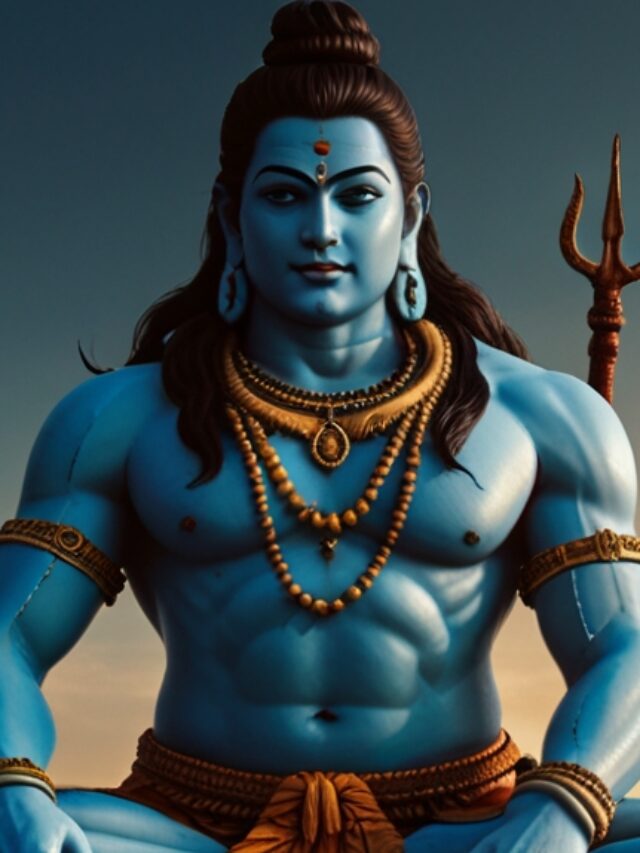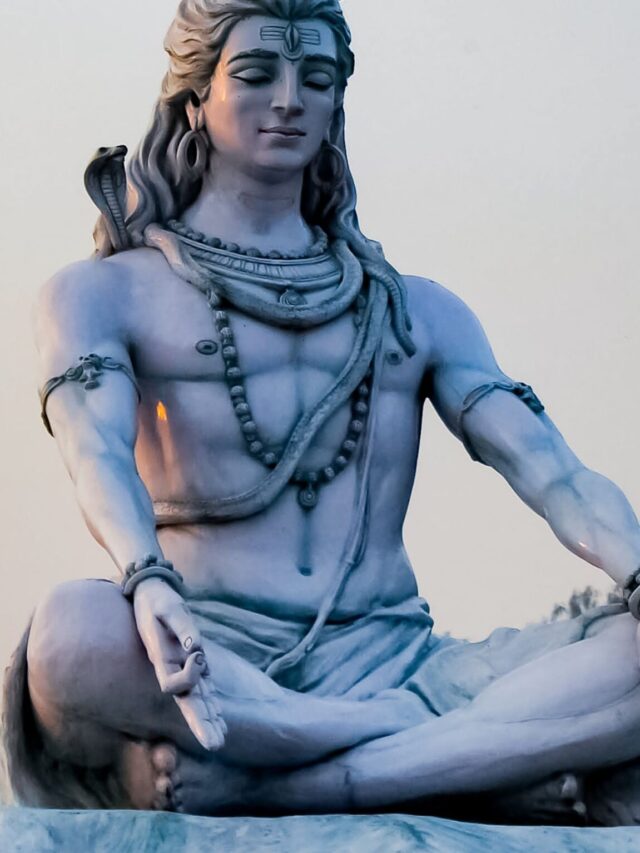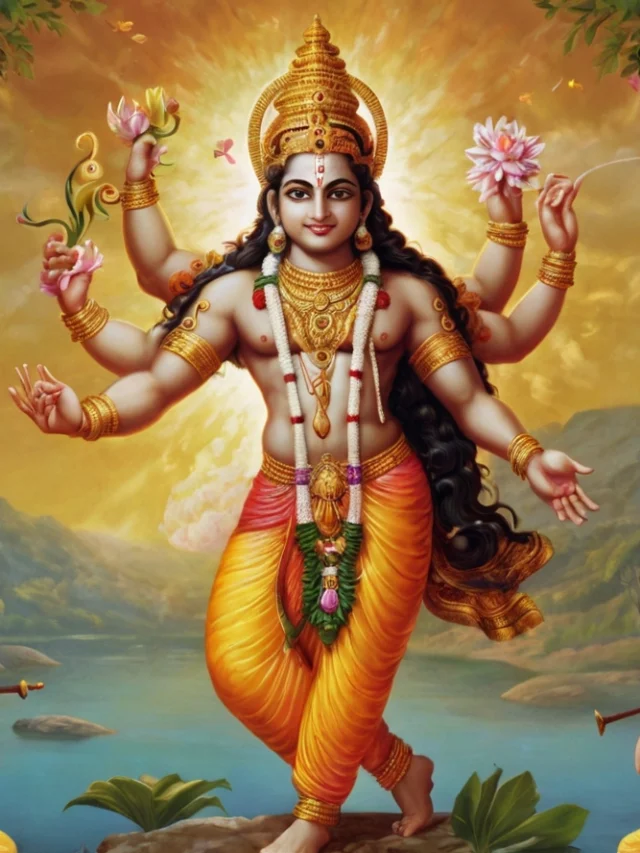The Intricate Tapestry of Kishkindha Kand: Alliances, Battles, and the Search for Sita
The Kishkindha Kand, or the Kishkindha Chapter, is the fourth book of the Ramayana, a revered Indian epic poem. It’s a vibrant tapestry woven with themes of duty, loyalty, courage, and the complexities of forging alliances. This chapter is a pivotal turning point in the epic narrative, setting the stage for the dramatic events to come.
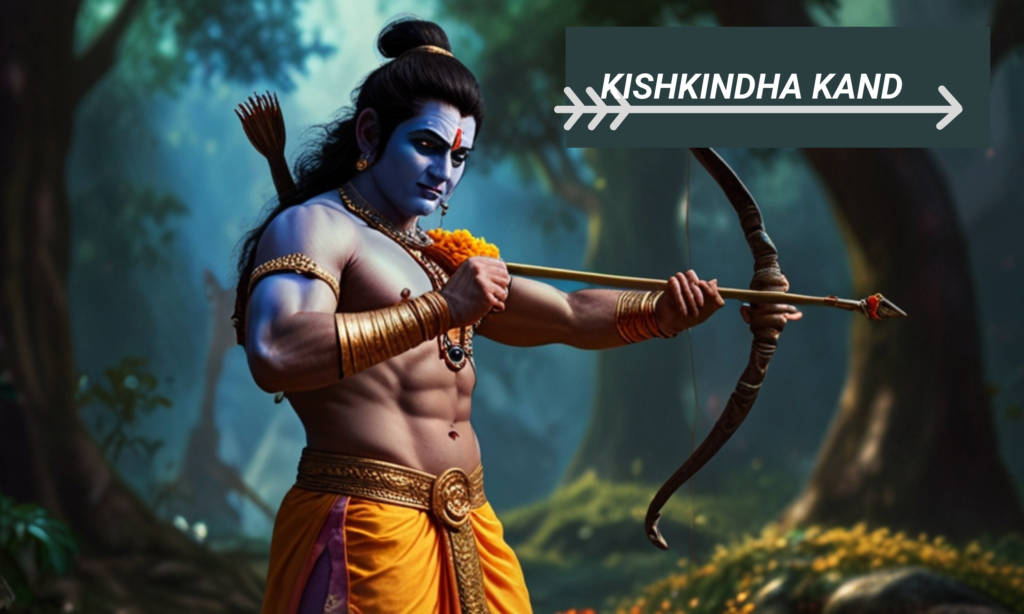
Key Events and Characters of Kishkinda Kand (Kishkindha Chapter) in the Ramayana:
The Kishkinda Kand is the fourth chapter of the Ramayana, and it marks a crucial turning point in Rama’s quest to find Sita. Here’s a breakdown of the key events and characters that propel the story forward:
Characters:
- Rama: The rightful heir to Ayodhya, exiled to the forest with Sita and Lakshmana.
- Sita: Rama’s wife, abducted by the demon king Ravana.
- Lakshmana: Rama’s loyal brother, always by his side.
- Sugriva: The rightful king of Kishkindha, overthrown by his elder brother Vali.
- Hanuman: Sugriva’s loyal advisor and a powerful vanara warrior.
- Vali: Sugriva’s elder brother, the usurper of the Kishkindha throne.
Key Events:
- Seeking Aid in Kishkindha: After their time in the Dandaka forest, Rama, Sita, and Lakshmana reach Kishkindha. Driven by the desire to find Sita, Rama seeks the help of the vanaras who inhabit this kingdom.
- Meeting Sugriva: Rama encounters Sugriva, living in exile after being usurped by his brother, Vali.
- A Pact is Formed: Rama learns of Sugriva’s plight and agrees to help him reclaim his throne. In exchange, Sugriva promises to assist Rama in finding Sita.
- Enter Hanuman: Hanuman plays a pivotal role. He serves as Sugriva’s trusted advisor and becomes a key figure in forging the alliance between Rama and Sugriva. Hanuman’s immense strength, loyalty, and intelligence are readily apparent.
- The Challenge of Vali: To reclaim the throne, Sugriva needs Rama’s help to defeat Vali in a fierce duel. The morality of this fight is debated, with some questioning Rama’s intervention. However, Rama upholds his promise to Sugriva and ensures justice through the duel’s outcome.
- Justice Prevails: With Rama’s assistance, Sugriva defeats Vali and regains his rightful place as king of Kishkindha.
- The Alliance Strengthened: A formal alliance is established between Rama and Sugriva. Sugriva mobilizes his vast vanara army to launch a massive search for Sita throughout Lanka and beyond.
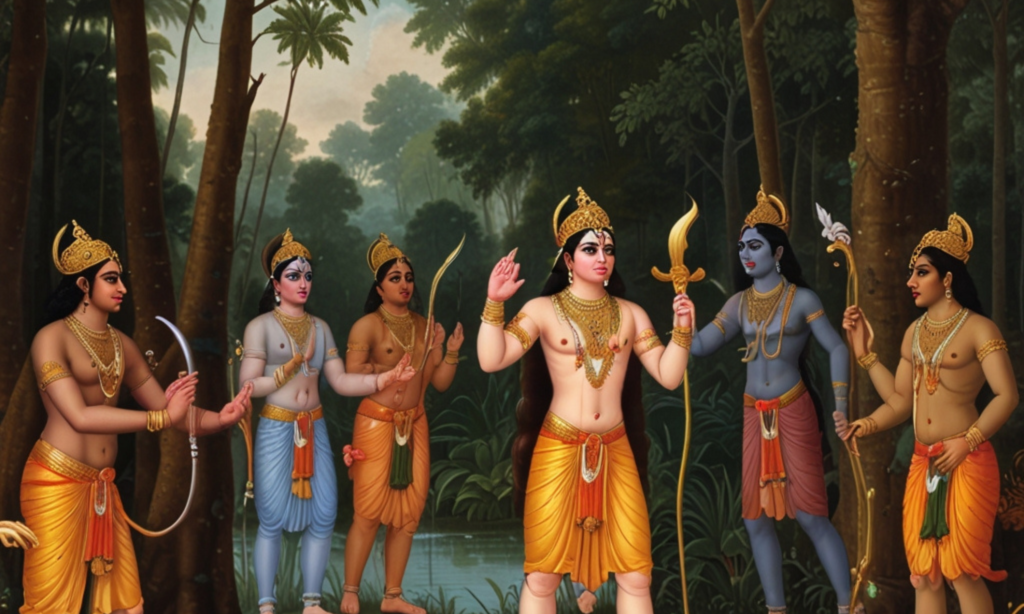
The Fateful Meeting: Rama, Sugriva, and Hanuman
The encounter between Rama, Sugriva, and Hanuman in the Kishkinda Kanda of the Ramayana is a pivotal moment in the epic tale. It marks the beginning of a powerful alliance that will ultimately change the course of Rama’s quest to find Sita.
Setting the Stage:
- Rama, along with Sita and Lakshmana, arrives in Kishkindha after their exile in the Dandaka forest.
- Driven by the grief of Sita’s abduction by Ravana, Rama seeks the help of the vanaras (monkey-like humanoids) who inhabit this kingdom.
Meeting Sugriva:
- Rama encounters Sugriva, a dejected figure living in exile. He learns that Sugriva was the rightful king of Kishkindha, but his elder brother, Vali, had usurped the throne.
A Pact is Forged:
- Rama, moved by Sugriva’s plight, agrees to help him reclaim his kingdom.
- A pact is formed: Rama would assist Sugriva in defeating Vali, and in return, Sugriva and his vanara army would help Rama find Sita.
Enter Hanuman:
- It’s here that Hanuman, Sugriva’s most trusted advisor, enters the scene.
- Hanuman plays a crucial role in forging this alliance. He recognizes Rama’s divine nature and convinces a hesitant Sugriva of the benefits of allying with Rama.
The Importance of Hanuman:
- From the outset, Hanuman is depicted as a powerful vanara warrior with immense strength, intelligence, and unwavering loyalty.
- He becomes an immediate source of comfort and support for Rama and Sita.
- His unwavering belief in Rama and his dedication to Sugriva set the stage for his pivotal role in the coming events.
The Significance of the Meeting:
- This meeting marks a turning point in the Ramayana. Rama acquires a powerful ally with a vast army that will be instrumental in the fight against Ravana.
- The characters of Sugriva and Hanuman are introduced, and their significance in the story unfolds from here.
- Hanuman’s unwavering devotion to Rama becomes a central theme that resonates throughout the epic.
Beyond the Pact:
- While the pact between Rama and Sugriva forms the core of the meeting, it’s also important to acknowledge the complexities involved.
- The morality of Rama’s intervention in the conflict between Sugriva and Vali is a subject of debate in some interpretations of the Ramayana.

Sugriva: The Exiled King and Rama’s Ally
Sugriva is a complex and crucial character in the Ramayana’s Kishkindha Kanda (Chapter). He’s the rightful king of Kishkindha, a kingdom inhabited by vanaras (monkey-like humanoids), but his life takes a dramatic turn due to his brother and a fateful encounter with Rama.
Loss and Exile:
- Sugriva was originally the king of Kishkindha, ruling alongside his powerful brother, Vali.
- However, a misunderstanding and a fierce duel led to Vali usurping the throne and forcing Sugriva into exile.
Rishyamukha: The Refuge of Sugriva
After being ousted from his kingdom by his powerful brother Vali, Sugriva sought refuge in the mountainous region of Rishyamukha. This place, situated in the southern part of the Kishkindha region, provided Sugriva with a safe haven for several reasons.
Safety from Vali:
- The primary reason Sugriva chose Rishyamukha as his refuge was its protection from Vali. Due to a curse placed upon Vali by the sage Matanga, Vali could not enter Rishyamukha. This curse effectively made the region a sanctuary for Sugriva and his followers, ensuring they were safe from Vali’s wrath and pursuit.
Alliance with Hanuman:
- During his exile, Sugriva was accompanied by his loyal minister, Hanuman, and other trusted vanaras. Hanuman played a crucial role in supporting Sugriva during this difficult period. Their alliance would later prove pivotal in forming a strong bond with Rama and Lakshmana.
Strategic Location:
- Rishyamukha’s terrain and natural fortifications made it an ideal location for Sugriva to regroup and plan his next moves. The mountainous region provided both a vantage point for observing any approaching threats and a difficult terrain for potential enemies to navigate.
Significance of Sugriva’s Exile
Sugriva’s time in Rishyamukha is not only a period of hiding but also one of significant transition and eventual empowerment:
Meeting Rama and Lakshmana:
- While residing in Rishyamukha, Sugriva’s fate takes a decisive turn when he encounters Rama and Lakshmana. Hanuman, disguised as a mendicant, first approaches the brothers to understand their intentions. Upon learning about Rama’s quest to find Sita and his prowess, Hanuman brings them to Sugriva.
- This meeting leads to the formation of a crucial alliance. Rama promises to help Sugriva regain his throne, and in return, Sugriva pledges to assist Rama in locating Sita.
- Rishyamukha’s terrain and natural fortifications made it an ideal location for Sugriva to regroup and plan his next moves. The mountainous region provided both a vantage point for observing any approaching threats and a difficult terrain for potential enemies to navigate.
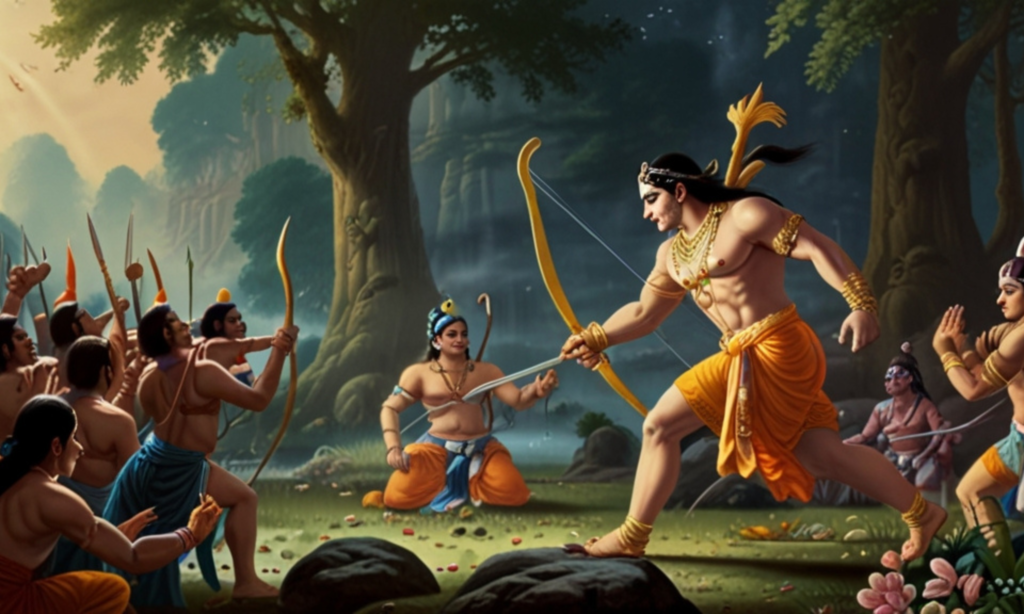
Vali: The Powerful Brother and Rama’s Controversial Fight
In the Ramayana’s Kishkindha Kanda, Vali emerges as a formidable figure, both a powerful obstacle and a source of complex emotions. His encounter with Rama raises questions about justice and the nature of combat.
Strength and Supremacy:
- Vali, Sugriva’s elder brother, is depicted as an exceptional warrior, possessing immense strength and a near-invincible boon – half the strength of any opponent he faces is transferred to him during combat.
- He had usurped the throne of Kishkindha from Sugriva, forcing him into exile.
The Challenge of Vali:
- Rama, upon forming an alliance with Sugriva, agrees to help him reclaim the throne. Defeating Vali becomes a necessity.
- However, Vali proves to be a formidable opponent, making a direct confrontation a risky proposition.
The Controversial Fight:
- The way Rama kills Vali is a point of contention in the Ramayana.
- Rama shoots Vali with an arrow from behind a tree, not in a face-to-face duel.
- This act is seen by some as a violation of righteous warfare (dharma) and a betrayal of the warrior code.
Vali’s Lament and Redemption:
- Fatally wounded, Vali confronts Rama, questioning the morality of his actions. He argues that attacking from hiding is cowardly and unbecoming of a warrior.
- Rama, in turn, defends his actions, stating his priority was to fulfill his promise to Sugriva and restore order. He also reveals his divine nature to Vali.
- Before succumbing to his wounds, Vali predicts Rama will face a similar fate – being killed by an arrow from behind – in his next incarnation.
The Legacy of Vali:
- Vali’s death paves the way for Sugriva to reclaim his throne and fulfill the alliance with Rama.
- However, the controversy surrounding his death lingers.
- Some interpretations portray Vali as a tragic figure, a powerful warrior wronged by his brother and denied a fair fight.
Sugriva’s Kingship and the Search for Sita:
Sugriva, the exiled king of Kishkindha in the Ramayana’s Kishkindha Kand, plays a crucial role in Rama’s quest to find Sita. However, his journey to regaining his throne and his commitment to the search for Sita are marked by complexity and controversy.
Regaining the Throne:
- Sugriva, the rightful king, was forced into exile by his powerful brother, Vali.
- He encounters Rama and Lakshmana, seeking their help in reclaiming his kingdom.
- A pact is formed: Rama helps Sugriva defeat Vali, and Sugriva, in return, promises to mobilize his vast vanara army to find Sita.
The Morality of the Duel:
- Rama’s intervention in the duel between Sugriva and Vali is a subject of debate.
- While Rama helps Sugriva regain his rightful place, the fairness of the fight, with Rama using an arrow from behind a tree, is questioned by some interpretations of the Ramayana.
Kingship and Complacency:
- After regaining his throne, Sugriva becomes somewhat complacent. He indulges in the comforts of his newfound power, neglecting the urgency of finding Sita.
- This lapse in focus leads to frustration for Rama and Lakshmana, who are desperate to find Sita.
Lakshmana’s Intervention:
- Witnessing Sugriva’s inaction, Lakshmana confronts him, reminding him of his promise to Rama.
- Lakshmana’s anger and frustration highlight the importance of keeping promises and upholding one’s duty (dharma).
The Search Begins:
- Spurred by Lakshmana’s intervention, Sugriva finally mobilizes his vanara army. Search parties are sent out in all directions to locate Sita.
The Significance of Hanuman:
- Hanuman, Sugriva’s most trusted advisor, emerges as the true champion of the search.
- His unwavering devotion to Rama and his exceptional skills make him instrumental in finding Sita and ultimately aiding in her rescue.

